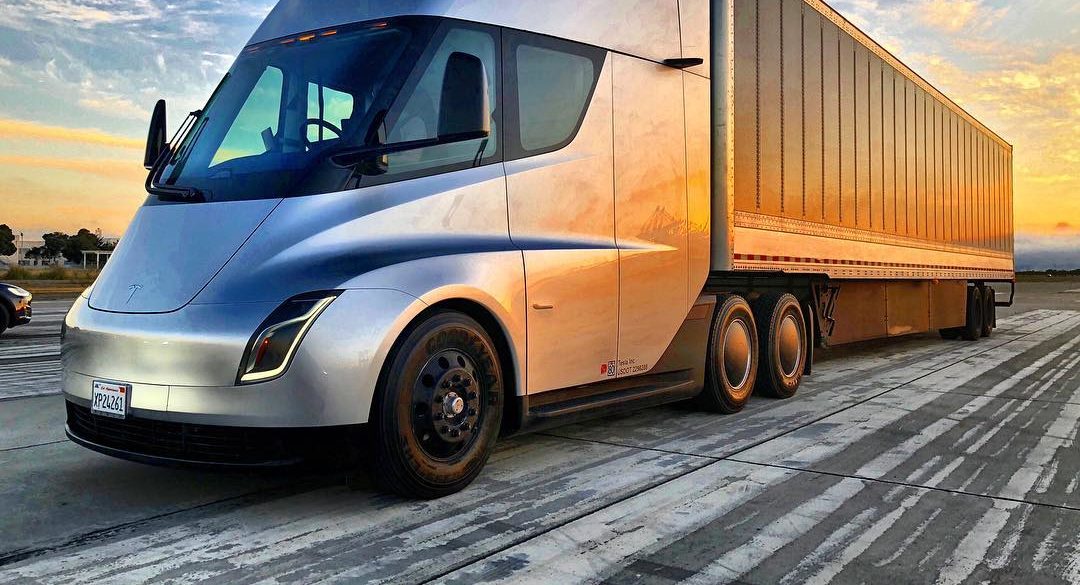
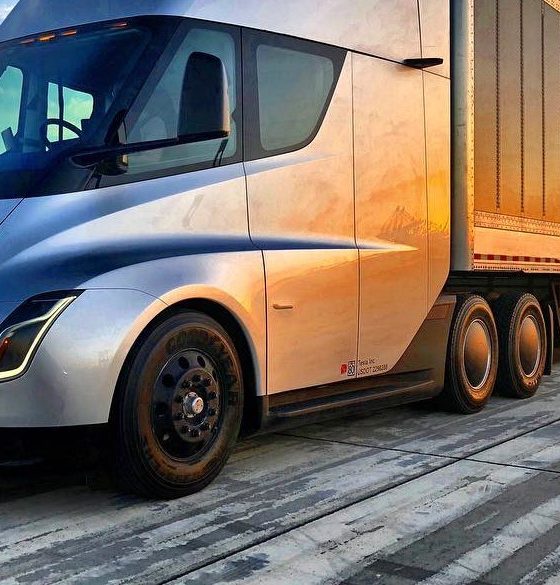
News
Tesla Semi ‘speed & agility’ praised by professional driver after electric truck encounter
The Tesla Semi is currently traveling across the United States to gather real-world data and refine its systems before it gets released next year. Tesla seems to have brought the Semi over to be test driven by professional driver and 28-year auto veteran Emile Bouret recently as well, who walked away from the experience thoroughly impressed.
Emile Bouret is a professional test driver who has worked with Tesla for years. Bouret is a close friend of Tesla chief designer Franz von Holzhausen, and he has been asked to test drive the company’s vehicles from the Model S to the original Tesla Roadster. He was also the man who conducted test drives in the next-generation Tesla Roadster during the vehicle’s unveiling last November.
The professional driver recently posted an update on his Instagram about the Tesla Semi, lauding the electric long-hauler for its speed and agility, stating that the truck’s performance is practically at odds with its size. Bouret’s caption on his Instagram post suggests that he actually got some hands-on time with the electric long-hauler.
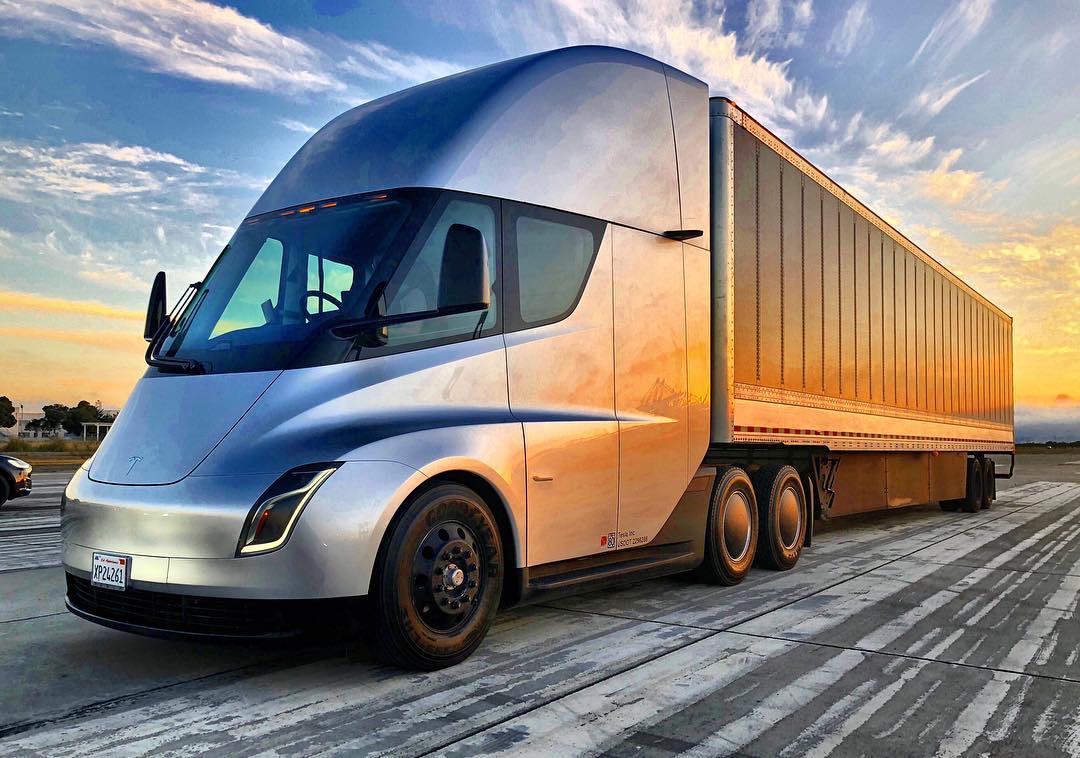
“Blurring The Line | Coworker Edition – I’m clearly very lucky to do what I do & to work with many talented people. As if they could ever be overlooked, the inanimate coworkers I get to work with also tend to be incredibly capable. And that was certainly true with this one, which made a surprise appearance at a recent work site. To see this thing coming down the road in near silence & with speed & agility seemingly at odds with something of its size makes you feel as if you’re living in the future. Kickass cool & crazy in equal measure… the Tesla Semi.”
Tesla loves bending the rules of markets that it disrupts. When the company started selling cars, its business model did away with dealerships, shaking the very idea of how brand new cars are sold. When it seemed like GA3 would not be enough to build 5,000 Model 3 per week by the end of Q2 2018, Tesla built another assembly line inside a sprung structure at the grounds of the Fremont factory.
Now, Tesla is attempting to break into another market that is ripe for disruption — the American trucking industry — and its weapon of choice is the Tesla Semi. The Tesla Semi, just like CEO Elon Musk and the company itself, has attracted its own set of disbelievers and critics. Martin Daum, Daimler’s head of trucks, even suggested that the Tesla Semi defies the laws of physics, considering the specs announced by Musk. Jon Mills, a spokesman for engine maker Cummins Inc., largely dismissed the electric truck and its chances at the long-haul market as well, citing weak demand.
That has not stopped Tesla from pushing the Semi, though. Over the past few weeks, multiple sightings of the Semi have been reported across the United States, and during this time, the vehicle was seen visiting some of the companies that placed pre-orders for the long-hauler. Among these are UPS, J.B. Hunt, and Ruan Transportation Management Systems, all of which shared their enthusiasm for the truck online.
Just like Tesla’s other vehicles, the Semi is designed to be a long-hauler that could be driven well. This is a trademark of all Tesla electric cars to date, as the Model S, Model X, and Model 3 have all been hailed for their ride and drive. The vehicles themselves might attract criticism over their design (such as the Model X’s overcomplicated Falcon Wing Doors and the first-production Model 3’s build quality), but when it comes to drivability and performance, Tesla’s electric cars usually pass with flying colors.
This is what happened with the Model 3 during Detroit veteran Sandy Munro’s teardown and analysis of the vehicle. Munro spared no criticism when he talked about the Model 3’s panel gaps and overall build quality, but when he actually drove the electric sedan, he was impressed. Munro later noted that the person who tuned the suspension for the Model 3 could easily have been an “F1 Prince” — no small compliment coming from a man with decades of experience in the auto industry.
If Emile Bouret’s praise for the Tesla Semi is any indication, it appears that the electric long-hauler would be able to impress even its staunchest critics when it comes to the way it drives and its overall performance. Tesla, after all, has noted that it is in the process of improving the truck before it enters mass production. Elon Musk has already teased that the long-range variant of the vehicle will have closer to 600 miles of range. Making the Telsa Semi impressive to drive is just more icing on the cake.

News
Tesla is improving Giga Berlin’s free “Giga Train” service for employees
With this initiative, Tesla aims to boost the number of Gigafactory Berlin employees commuting by rail while keeping the shuttle free for all riders.
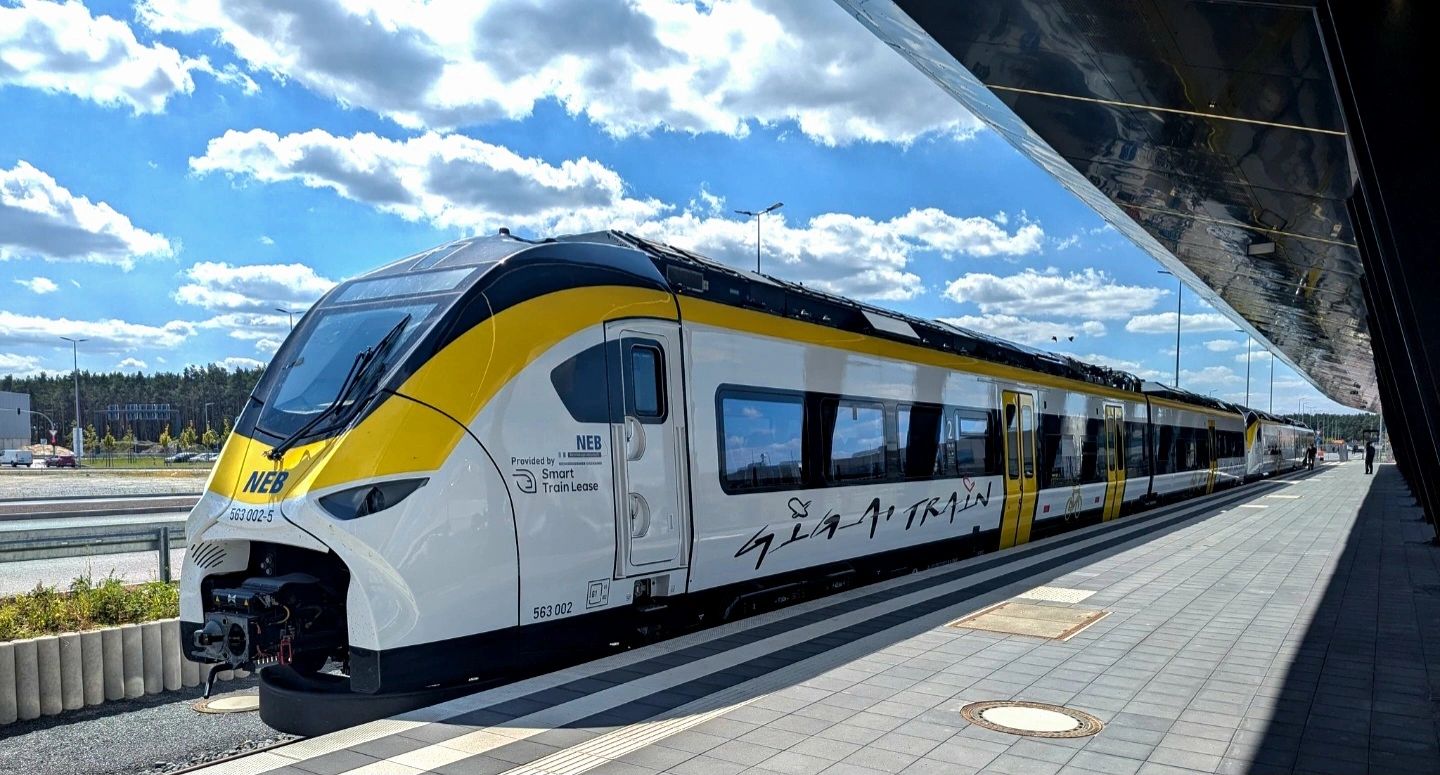
Tesla will expand its factory shuttle service in Germany beginning January 4, adding direct rail trips from Berlin Ostbahnhof to Giga Berlin-Brandenburg in Grünheide.
With this initiative, Tesla aims to boost the number of Gigafactory Berlin employees commuting by rail while keeping the shuttle free for all riders.
New shuttle route
As noted in a report from rbb24, the updated service, which will start January 4, will run between the Berlin Ostbahnhof East Station and the Erkner Station at the Gigafactory Berlin complex. Tesla stated that the timetable mirrors shift changes for the facility’s employees, and similar to before, the service will be completely free. The train will offer six direct trips per day as well.
“The service includes six daily trips, which also cover our shift times. The trains will run between Berlin Ostbahnhof (with a stop at Ostkreuz) and Erkner station to the Gigafactory,” Tesla Germany stated.
Even with construction continuing at Fangschleuse and Köpenick stations, the company said the route has been optimized to maintain a predictable 35-minute travel time. The update follows earlier phases of Tesla’s “Giga Train” program, which initially connected Erkner to the factory grounds before expanding to Berlin-Lichtenberg.
Tesla pushes for majority rail commuting
Tesla began production at Grünheide in March 2022, and the factory’s workforce has since grown to around 11,500 employees, with an estimated 60% commuting from Berlin. The facility produces the Model Y, Tesla’s best-selling vehicle, for both Germany and other territories.
The company has repeatedly emphasized its goal of having more than half its staff use public transportation rather than cars, positioning the shuttle as a key part of that initiative. In keeping with the factory’s sustainability focus, Tesla continues to allow even non-employees to ride the shuttle free of charge, making it a broader mobility option for the area.
News
Tesla Model 3 and Model Y dominate China’s real-world efficiency tests
The Tesla Model 3 posted 20.8 kWh/100 km while the Model Y followed closely at 21.8 kWh/100 km.
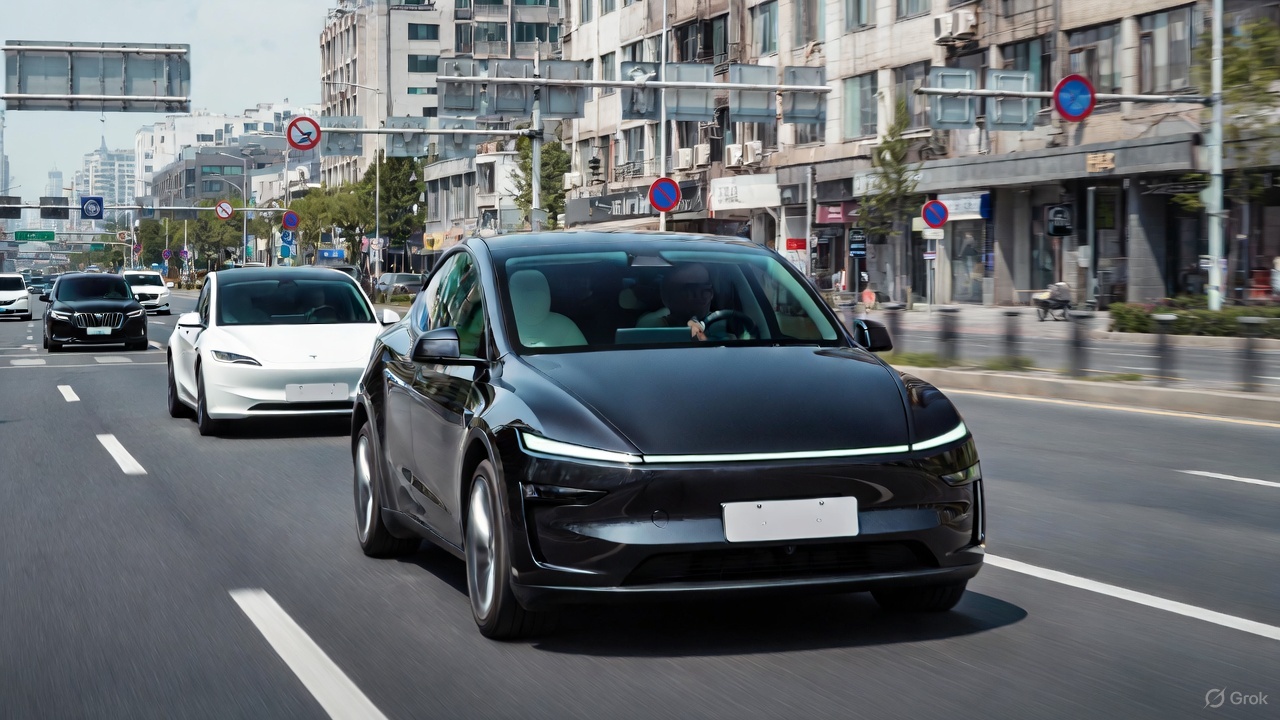
Tesla’s Model 3 and Model Y once again led the field in a new real-world energy-consumption test conducted by China’s Autohome, outperforming numerous rival electric vehicles in controlled conditions.
The results, which placed both Teslas in the top two spots, prompted Xiaomi CEO Lei Jun to acknowledge Tesla’s efficiency advantage while noting that his company’s vehicles will continue refining its own models to close the gap.
Tesla secures top efficiency results
Autohome’s evaluation placed all vehicles under identical conditions, such as a full 375-kg load, cabin temperature fixed at 24°C on automatic climate control, and a steady cruising speed of 120 km/h. In this environment, the Tesla Model 3 posted 20.8 kWh/100 km while the Model Y followed closely at 21.8 kWh/100 km, as noted in a Sina News report.
These figures positioned Tesla’s vehicles firmly at the top of the ranking and highlighted their continued leadership in long-range efficiency. The test also highlighted how drivetrain optimization, software management, and aerodynamic profiles remain key differentiators in high-speed, cold-weather scenarios where many electric cars struggle to maintain low consumption.
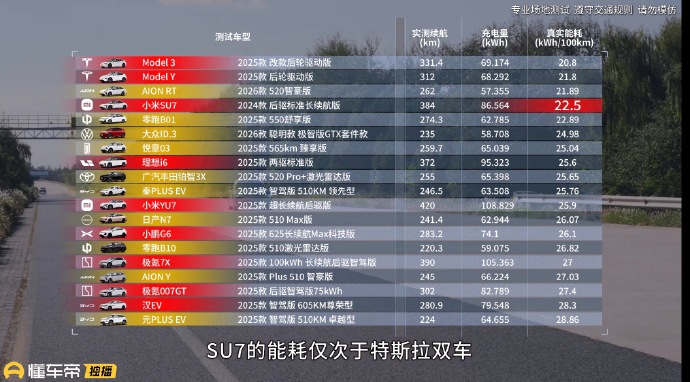
Xiaomi’s Lei Jun pledges to continue learning from Tesla
Following the results, Xiaomi CEO Lei Jun noted that the Xiaomi SU7 actually performed well overall but naturally consumed more energy due to its larger C-segment footprint and higher specification. He reiterated that factors such as size and weight contributed to the difference in real-world consumption compared to Tesla. Still, the executive noted that Xiaomi will continue to learn from the veteran EV maker.
“The Xiaomi SU7’s energy consumption performance is also very good; you can take a closer look. The fact that its test results are weaker than Tesla’s is partly due to objective reasons: the Xiaomi SU7 is a C-segment car, larger and with higher specifications, making it heavier and naturally increasing energy consumption. Of course, we will continue to learn from Tesla and further optimize its energy consumption performance!” Lei Jun wrote in a post on Weibo.
Lei Jun has repeatedly described Tesla as the global benchmark for EV efficiency, previously stating that Xiaomi may require three to five years to match its leadership. He has also been very supportive of FSD, even testing the system in the United States.
Elon Musk
Elon Musk reveals what will make Optimus’ ridiculous production targets feasible
Musk recent post suggests that Tesla has a plan to attain Optimus’ production goals.
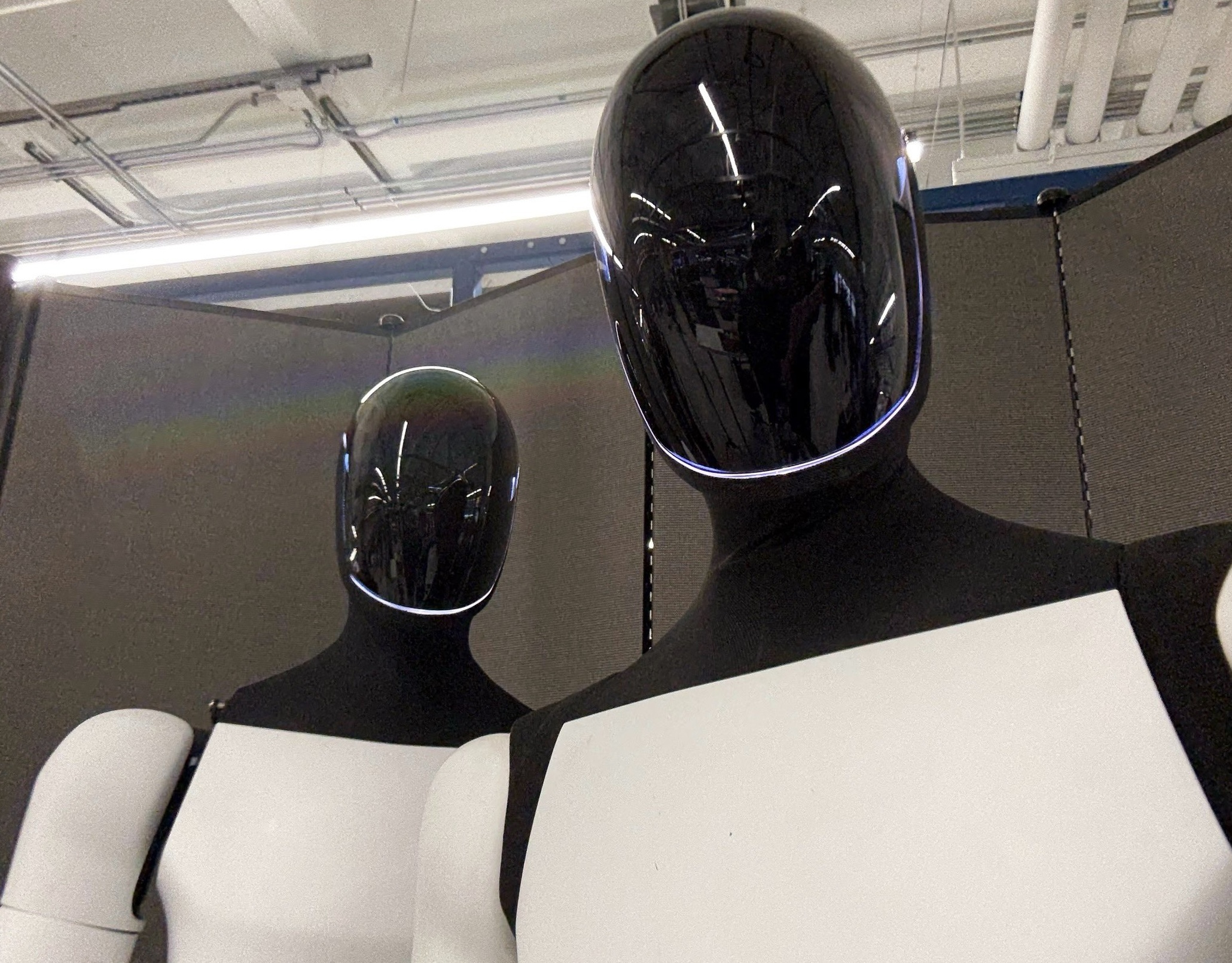
Elon Musk subtly teased Tesla’s strategy to achieve Optimus’ insane production volume targets. The CEO has shared his predictions about Optimus’ volume, and they are so ambitious that one would mistake them for science fiction.
Musk’s recent post on X, however, suggests that Tesla has a plan to attain Optimus’ production goals.
The highest volume product
Elon Musk has been pretty clear about the idea of Optimus being Tesla’s highest-volume product. During the Tesla 2025 Annual Shareholder Meeting, Musk stated that the humanoid robot will see “the fastest production ramp of any product of any large complex manufactured product ever,” starting with a one-million-per-year line at the Fremont Factory.
Following this, Musk stated that Giga Texas will receive a 10 million-per-year unit Optimus line. But even at this level, the Optimus ramp is just beginning, as the production of the humanoid robot will only accelerate from there. At some point, the CEO stated that a Mars location could even have a 100 million-unit-per-year production line, resulting in up to a billion Optimus robots being produced per year.
Self-replication is key
During the weekend, Musk posted a short message that hinted at Tesla’s Optimus strategy. “Optimus will be the Von Neumann probe,” the CEO wrote in his post. This short comment suggests that Tesla will not be relying on traditional production systems to make Optimus. The company probably won’t even hire humans to produce the humanoid robot at one point. Instead, Optimus robots could simply produce other Optimus robots, allowing them to self-replicate.
The Von Neumann is a hypothetical self-replicating spacecraft proposed by the mathematician and physicist John von Neumann in the 1940s–1950s. The hypothetical machine in the concept would be able to travel to a new star system or location, land, mine, and extract raw materials from planets, asteroids, and moons as needed, use those materials to manufacture copies of itself, and launch the new copies toward other star systems.
If Optimus could pull off this ambitious target, the humanoid robot would indeed be the highest volume product ever created. It could, as Musk predicted, really change the world.









